Growing up in a farming community in New Zealand, hunting was a popular hobby. Duck shooting on the Waikato River was something that I often experienced during the hunting season. Each Saturday night, roast duck was on the menu. The challenge was to avoid cracking a tooth on the shotgun pellets; removing them all before cooking was a massive challenge!
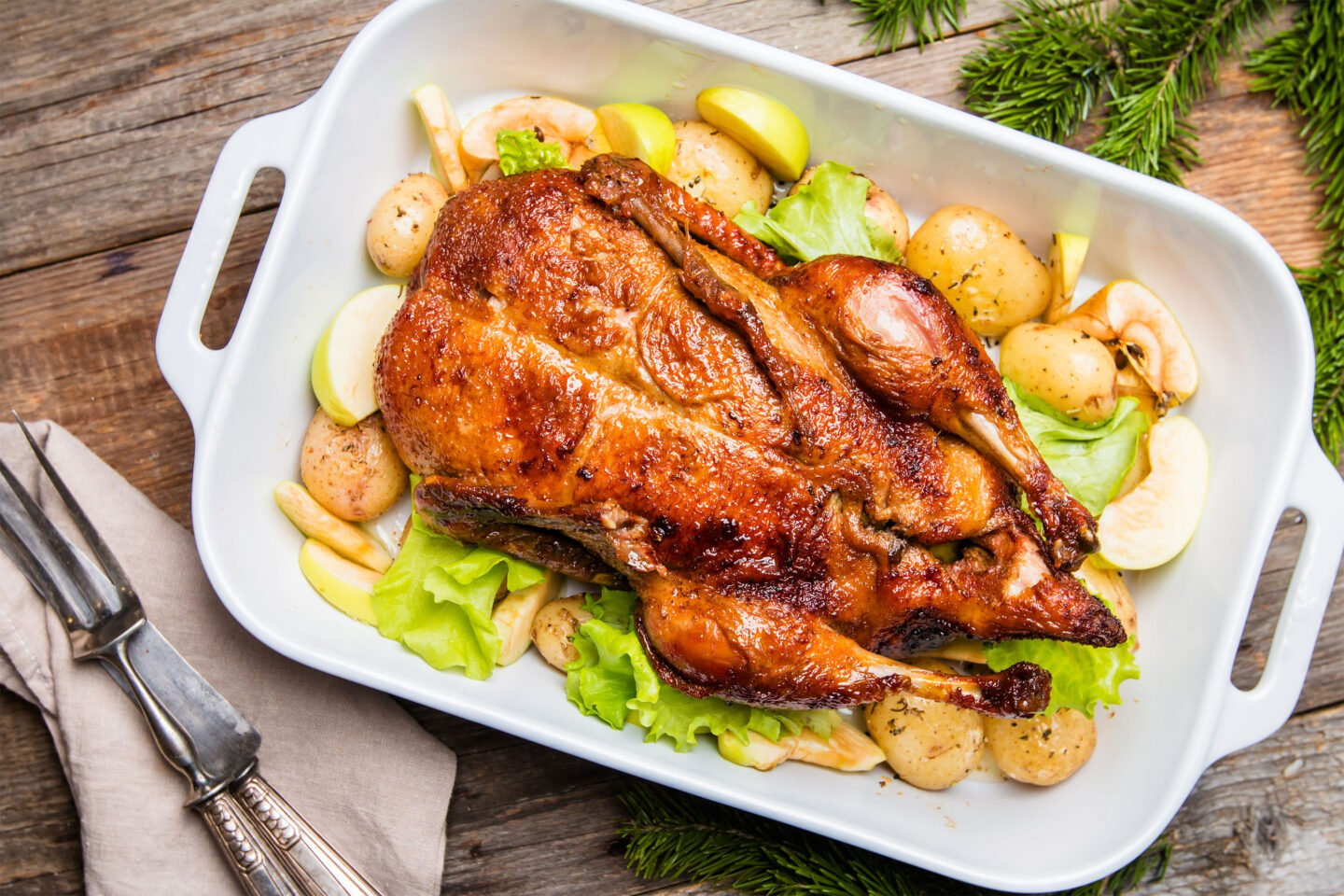
If you’re wondering, "What does duck taste like?" then you’re in the right place. I've eaten loads of this poultry. On this page, you’ll find out what this bird tastes like, some standard methods for cooking it, and a handy trick for altering the flavor.
Table of Contents
Duck Meat: Defining the Flavor
Although duck is poultry, don’t compare it to chicken or turkey. The first thing you’ll notice is that there is much less meat on a duck. One bird probably won’t feed a hungry family, especially if teenagers are part of the mix.
Duck meat is a strong-flavored, gamey-tasting meat that is closer to red meat in flavor than chicken. It has more fat, which, when cooked correctly, provides a lovely mix of tender, moist protein with a fatty mouthfeel. The taste of duck could roughly be compared to liver or steak.
Duck skin is noticeably thicker and fattier than that of other poultry. The challenge for any cook is to transform it into a crispy, flavor-packed element on the plate. Not as easy as it sounds! If cooked incorrectly, the fat will be rubbery and unpleasant to eat.
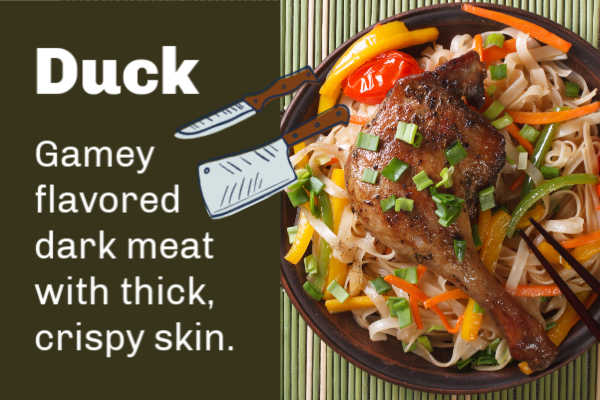
Leftover duck fat is a subtle-tasting by-product of a cooked duck. It is wonderful for offering umami flavor and silky texture to vegetables and meat. Check out our recipe for duck fat roasted potatoes; I promise you won’t be disappointed.
Preparation Tip: If you've got fresh duck at home, make the butchering process quick and easy using a hatchet. It sounds a little extreme, but this tool easily chops through bone and sinew. Just keep your fingers clear.
Wild vs. Farmed
Wild duck meat does not compare to the farmed version. The biggest difference I find is fat content. Farmed birds don’t have to do a lot to survive; in fact, they barely have to fly. They build up a layer of fat, rarely found on a wild duck.
Wild ducks are a mixed bag in terms of texture. You never know what age the bird is; a duck that’s over ten years old will be tougher than a 10-week-farmed one.
The farmed duck won’t compete with a wild duck in flavor, though. Like any wild animal, they have a wider range of food to eat, and this results in a stronger-tasting, gamier protein.
Duck Vs. Chicken, Turkey, and Goose
| Type of poultry | Meat color | Flavor intensity |
|---|---|---|
| Duck | Dark | Strong |
| Chicken | White | Mild |
| Turkey | White | Mild |
| Goose | Dark | Strong |
The impact of cooking method
As with any ingredient, the process of cooking can impact the flavor and texture of the final dish. Here are some common ways to cook duck.
1. Peking Duck
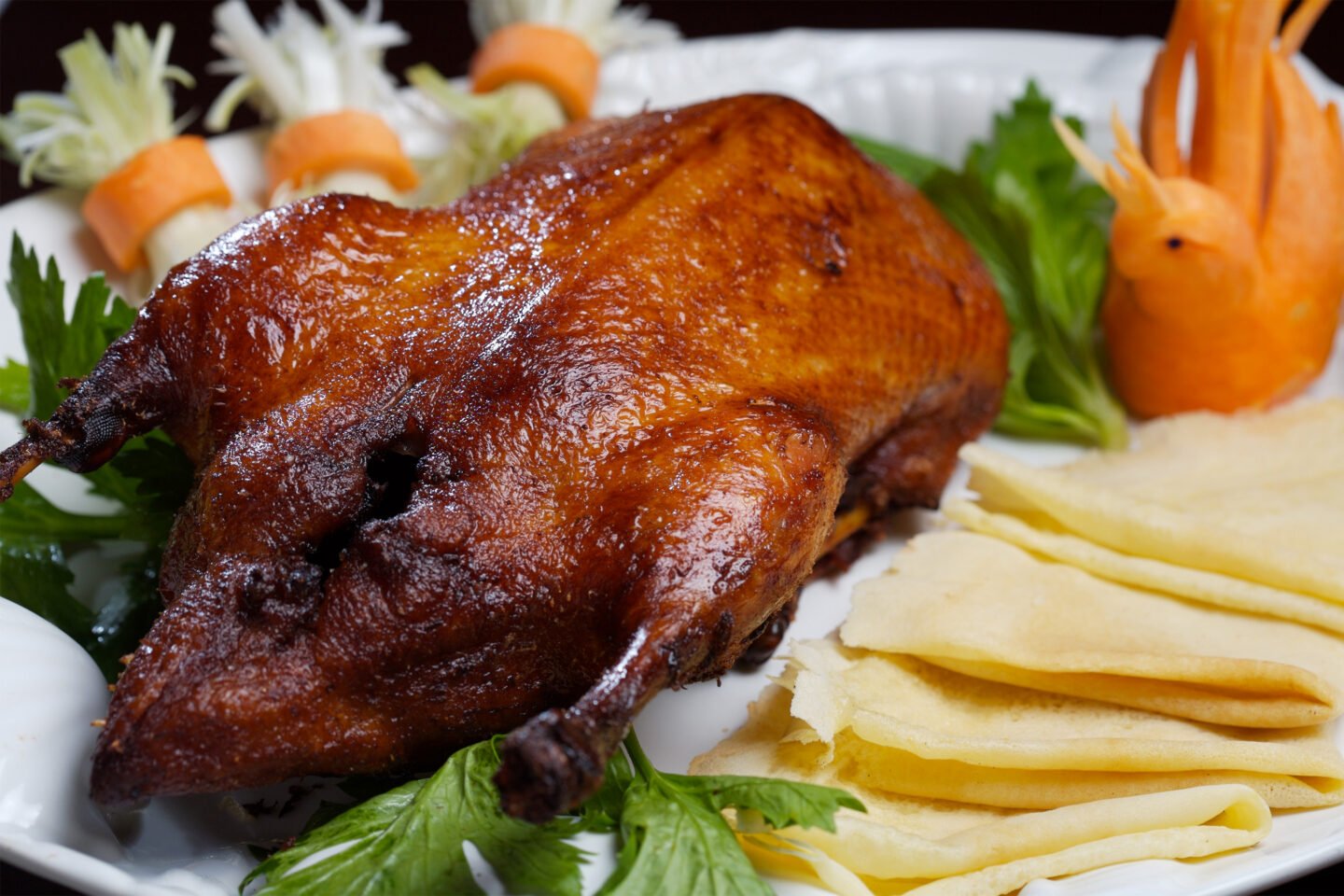
Peking duck is a classic Chinese dish that has stood the test of time. It has a characteristic red color when the bird is bought to the table thanks to the addition of hoisin sauce during cooking. The skin is crispy and gets served with a sauce separately. Authentic recipes blow the duck full of air to cause the skin to stretch – this results in a very crispy skin.
What to expect: A flavorsome, colorful meal with amazingly crispy skin.
2. Confit of Duck
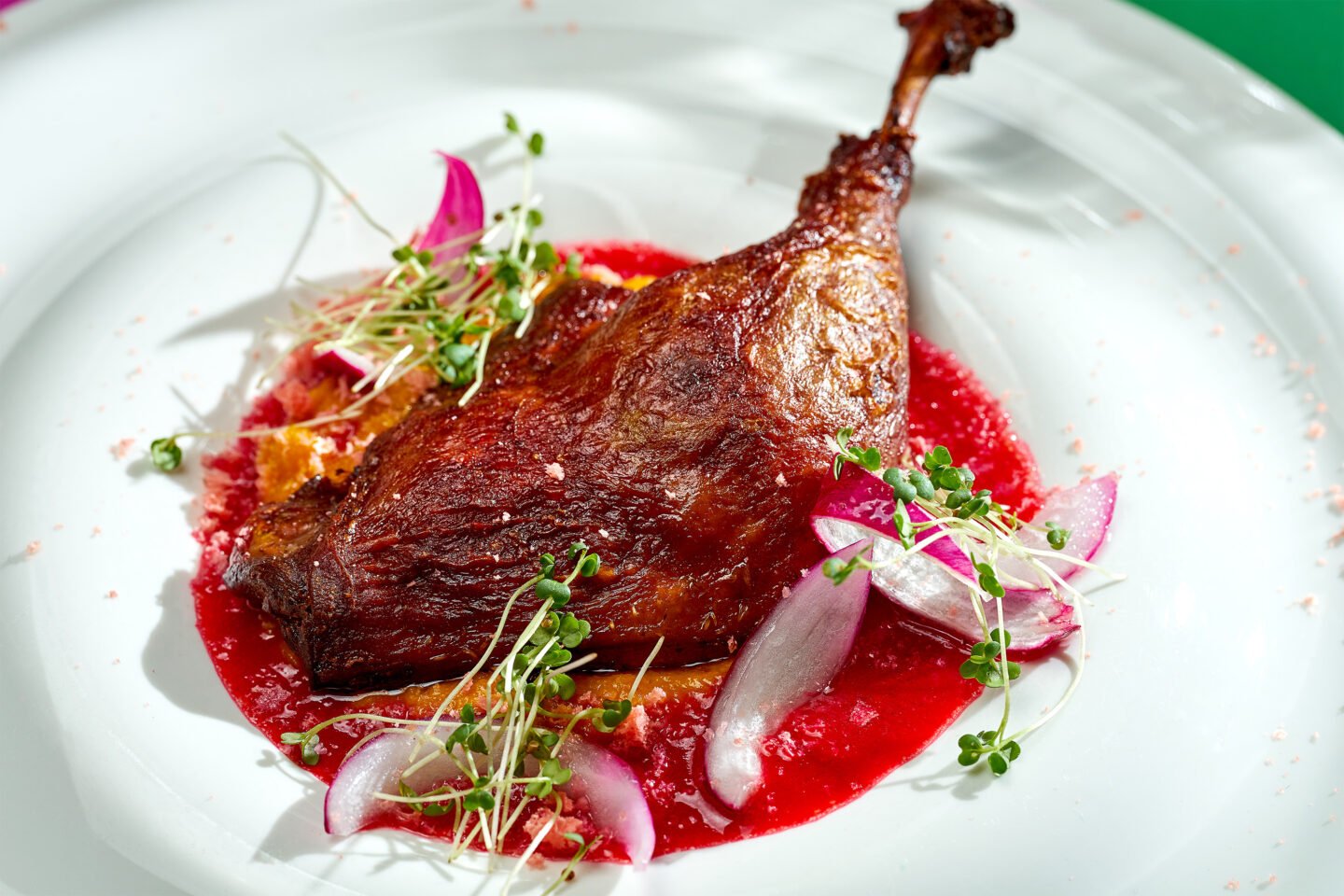
A confit of duck usually involves cooking the legs of the bird. The cooking method involves submerging then cooking the meat in a liquid, usually oil or rendered duck fat. The confit process requires the meat to be cooked at a low heat (185°F) to prevent the duck from overcooking.
What to expect: If cooking temperatures and times are correctly followed, expect tender meat with the full flavor of the duck locked in.
3. Roast Duck
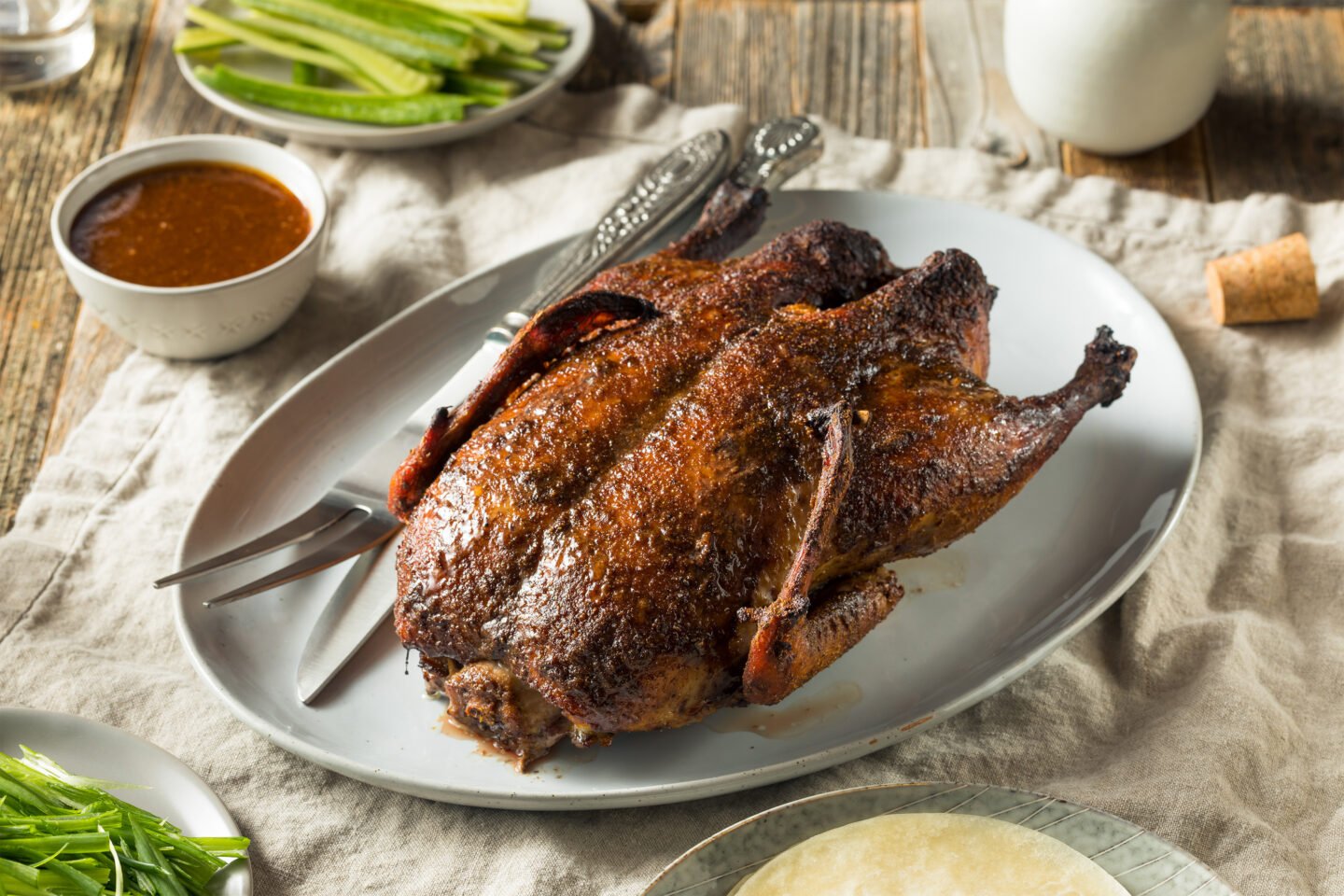
For the at-home cook, this is a popular method cooking duck. It’s essential to score the skin before roasting to allow the fat to escape.
To find out more about how to cook a duck, check out this resource. The process is a little more involved than cooking a chicken.
What to expect: Like any roasted meat, you can expect a crispy skin with tender, flavor-packed meat.
Expert Tip: Toning down the gamey flavor
The process of brining will reduce the intensity of the gamey flavor - although the saltiness will increase. The meat will become a lighter shade after brining.
What you need
- 8 cups water
- ½ cup pickling spices
- ½ cup salt
- ½ cup brown sugar
Method
- Heat half the water, spices, salt and sugar in a large saucepan until the salt and sugar have dissolved.
- Remove from the heat and pour into a large bowl with the remaining cold water.
- Allow to cool before adding the duck to the liquid and soaking for 2 ½ hours.
- Remove the duck, dry it off with paper towels, and then rub with olive oil or canola oil before cooking.
Related reading:
What does kangaroo meat taste of?
What does pheasant taste like?
Final Words
In the store, duck looks quite similar to chicken. But once cooked, there are some significant differences in taste, color, and fat content. If you prefer mild meat, then duck may not be the best option for you. It’s a strong flavored, gamey tasting meat that is dark in color. The skin is thick and fatty, perfect for crisping up.
Have you decided to cook duck at home? Remember to keep all that delicious duck fat, that is loaded with umami flavor. Use it to add flavor to practically any vegetable or meat.
Do you like to cook duck in your own home? Let us know in the comments how you prefer to cook it?

Leave a Reply